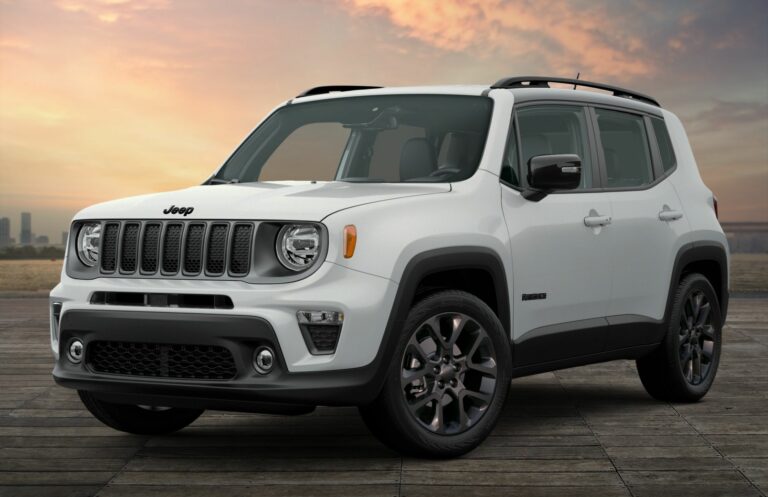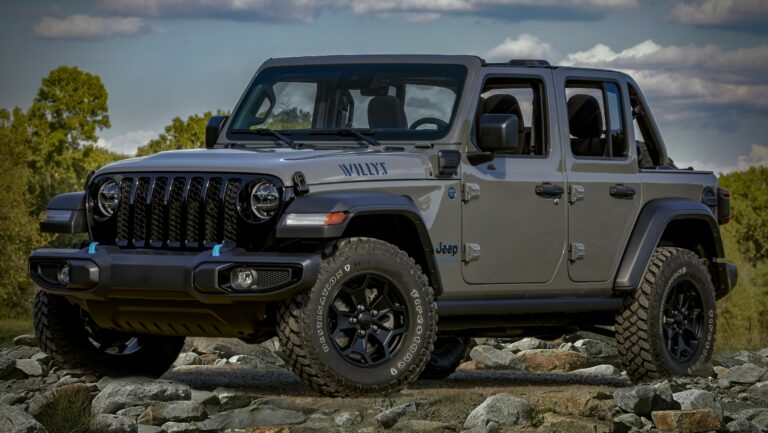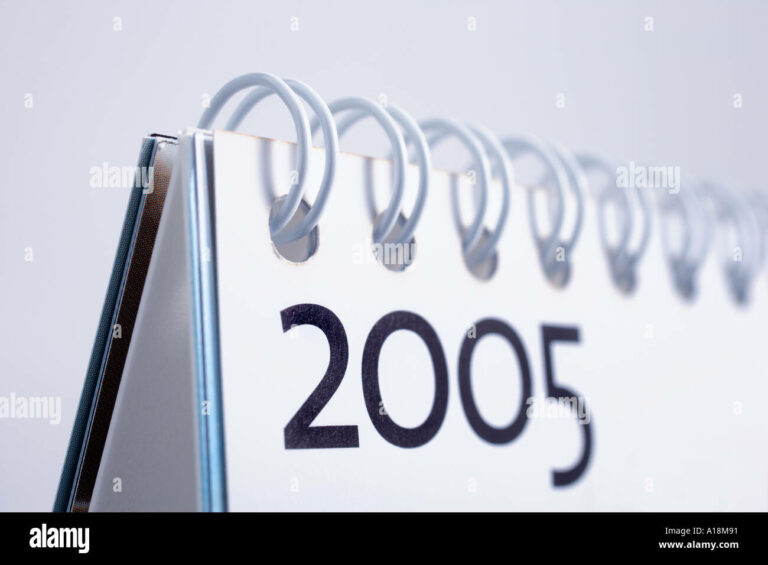1947 CJ-2A Willys Jeep For Sale: A Comprehensive Buyer’s Guide
1947 CJ-2A Willys Jeep For Sale: A Comprehensive Buyer’s Guide /jeeps.truckstrend.com
The year 1947 holds a special place in automotive history, particularly for enthusiasts of rugged, no-nonsense utility vehicles. It was a pivotal year for the Willys-Overland company, as their iconic CJ-2A "Universal Jeep" was firmly established as the go-to vehicle for farmers, construction workers, and adventurers transitioning from wartime necessity to peacetime utility. If you’re seeing a "1947 CJ-2A Willys Jeep For Sale" listing, you’re not just looking at a vehicle; you’re looking at a tangible piece of post-war American ingenuity, a symbol of resilience, and an enduring testament to simple, functional design.
This article serves as a comprehensive guide for anyone considering the purchase of a 1947 CJ-2A Willys Jeep. We’ll delve into its historical significance, what to scrutinize during an inspection, how to navigate the market, and what to expect from ownership. Whether you’re a seasoned collector, a budding restorer, or simply captivated by its timeless appeal, understanding the nuances of this classic will ensure a rewarding acquisition.
1947 CJ-2A Willys Jeep For Sale: A Comprehensive Buyer’s Guide
The Enduring Legacy of the CJ-2A Willys Jeep
The story of the CJ-2A begins with the legendary Willys MB, the military vehicle that became synonymous with Allied victory in World War II. As the war concluded, Willys-Overland recognized a massive untapped market: civilians. Farmers, ranchers, and small businesses needed a versatile, tough vehicle, and the "Jeep" was already a household name. The CJ-2A, or "Civilian Jeep 2A," was the first mass-produced civilian version, rolling off the assembly line starting in 1945.
The 1947 model year represents a mature version of the CJ-2A, having benefited from initial production refinements. Key features that defined it include:
- The "Go-Devil" L-134 Engine: A robust, flathead four-cylinder engine known for its reliability and torque, producing around 60 horsepower. It was simple to maintain and incredibly durable.
- T-90 Transmission: A sturdy three-speed manual transmission, coupled with a Spicer 18 transfer case, offering two-wheel drive high, four-wheel drive high, and four-wheel drive low ranges.
- Solid Axles: Dana 25 front and Dana 41 or 44 rear axles, providing impressive off-road capability and strength.
- Civilian-Specific Features: Unlike its military predecessor, the CJ-2A featured a tailgate (a groundbreaking addition!), larger headlights, a seven-slot grille (a design element that persists in Jeeps today), an external fuel cap, and a host of agricultural and industrial power take-off (PTO) options.
- Flat Fenders: Its iconic flat fenders and upright windshield give it an unmistakable profile, instantly recognizable as a classic Willys Jeep.

The CJ-2A was marketed as "The Universal Go-Getter" and lived up to its name, proving invaluable in a wide array of roles from plowing fields to powering sawmills. Its simplicity, ruggedness, and sheer utility ensured its popularity then, and its historical significance, coupled with its charming vintage aesthetic, makes it highly sought after today.
What to Look For When Buying a 1947 CJ-2A
Acquiring a 1947 CJ-2A requires a meticulous inspection. These vehicles are over 75 years old, and their condition can vary wildly from a rusted-out shell to a concours-quality restoration. Here’s a detailed checklist:
-
Body and Frame Condition: This is paramount.
- Rust: The biggest enemy. Inspect the frame rails thoroughly for cracks, repairs, or severe corrosion, especially where cross members attach. Check the "hat channels" under the floorboards, the floorboards themselves, toolboxes, battery trays, and fender wells. Minor surface rust is manageable, but extensive rot signifies major work.
- Body Panels: Look for accident damage, poorly executed repairs, and excessive bondo. Original body panels are preferred, but reproduction panels are available.
- Grille and Windshield Frame: Ensure these iconic components are solid and free of major damage or rust.
-
Engine (Go-Devil L-134):
- Starting and Running: Does it start easily? Does it idle smoothly? Listen for knocking, excessive smoke (blue indicates oil burning, black indicates rich fuel mix, white could be coolant), or unusual noises.
- Leaks: Check for oil, coolant, and fuel leaks around the engine block, oil pan, and carburetor.
- Compression: A compression test is ideal to gauge internal engine health. Consistent readings across all cylinders are good.
- Cooling System: Inspect the radiator, hoses, and water pump for leaks or corrosion.
-
Drivetrain (T-90 Transmission, Spicer 18 Transfer Case, Axles):
- Transmission: Shift through all gears (if possible, during a test drive). Listen for grinding or difficulty engaging. Check for fluid leaks.
- Transfer Case: Engage 4WD high and low. Listen for abnormal noises. Check for leaks.
- Axles: Inspect differential housings for leaks. Look at universal joints (U-joints) on the driveshafts for play.
-
Brakes and Steering:
- Brakes: These are drum brakes all around. Check the master cylinder for leaks and fluid level. Test the pedal feel – it should be firm, not spongy. Test the emergency brake.
- Steering: Check for excessive play in the steering wheel. Inspect the steering box for leaks and play. Look at tie rod ends and drag link for wear.
-
Electrical System:
- 6V vs. 12V: Original CJ-2As used a 6-volt positive ground system. Many have been converted to 12-volt negative ground for easier starting and modern accessory compatibility. Understand which system is present.
- Wiring: Look for frayed, cracked, or exposed wires. Ensure all lights, gauges, and the horn function.
-
Originality vs. Modifications:
- Originality: A highly original, numbers-matching vehicle will command a premium, especially if it’s a low-mileage survivor or a professional restoration.
- Modifications: Many CJ-2As have been modified over the years. Common upgrades include 12V conversions, modern seats, turn signals, or even engine swaps. Decide if these modifications align with your goals (e.g., a reliable driver vs. a historically accurate showpiece).
-
Documentation:
- Ensure a clear title is available and matches the VIN (Vehicle Identification Number, typically on the firewall).
- Records: Any maintenance records, past registration, or restoration documentation adds value and insight.
Understanding the Market: Valuation and Pricing Factors
The price of a 1947 CJ-2A Willys Jeep For Sale can range dramatically, primarily based on its condition, originality, and completeness. Here’s a general guide:
| Condition Category | Description | Estimated Price Range (USD) |
|---|---|---|
| Project/Parts | Non-running, significant rust, incomplete, major mechanical work required. Suitable for a full restoration or parts donor. | $2,000 – $8,000 |
| Driver Quality | Running and drivable, but may have cosmetic flaws, minor mechanical issues, or older repairs. Can be enjoyed as is, but would benefit from ongoing work. | $8,000 – $18,000 |
| Nicely Restored | Fully functional with good cosmetics. May not be 100% historically accurate but looks good and runs reliably. Suitable for weekend drives and local shows. | $18,000 – $30,000 |
| Concours/Show Quality | Meticulously restored to original specifications, often with documented history and matching numbers. Everything is correct, clean, and fully functional. Suitable for top-tier shows and discerning collectors. | $30,000 – $50,000+ |
Factors influencing price:
- Completeness: Is it missing major components like the engine, transmission, or axles?
- PTO (Power Take-Off) Options: Jeeps with factory PTO units (front or rear) can fetch a higher price due to their rarity and utility.
- Hardtops/Accessories: Original hardtops, winches, or other period accessories can add significant value.
- Documentation: A well-documented history, especially of restoration or previous ownership, increases confidence and value.
- Location: Prices can vary regionally based on demand and availability.
The Restoration Journey: Challenges and Rewards
For many, buying a 1947 CJ-2A is the beginning of a restoration project. This journey is both challenging and incredibly rewarding.
Challenges:
- Time Commitment: A full restoration can take hundreds, if not thousands, of hours.
- Cost: While parts are generally available, the cumulative cost of rust repair, paint, mechanical rebuilds, and myriad small components can add up quickly.
- Specialized Knowledge: While simple, working on a vintage vehicle requires specific knowledge and tools.
- Parts Sourcing: While major mechanical parts are well-reproduced, finding obscure or specific original components can be a treasure hunt.
Rewards:
- Personal Satisfaction: The immense pride of bringing a piece of history back to life with your own hands.
- Preserving History: You become a custodian of an important automotive icon.
- Community: The Willys/Jeep community is vast, supportive, and passionate. Forums, clubs, and events provide invaluable resources and camaraderie.
- Investment: A well-restored CJ-2A can appreciate in value, though it should primarily be viewed as a passion project rather than a strict financial investment.
- Unique Driving Experience: There’s nothing quite like driving a vintage Jeep, connecting directly with the road and its mechanical workings.
Practical Considerations for Ownership
Owning a 1947 CJ-2A is different from owning a modern vehicle.
- Driving Experience: Expect a raw, visceral experience. No power steering, no power brakes, minimal sound deadening, and a top speed around 45-55 mph comfortably. It’s an open-air vehicle, so weather protection is limited.
- Maintenance: While simple, these vehicles require regular maintenance. Learning basic mechanics will save you money and deepen your understanding of the vehicle.
- Insurance: Standard auto insurance often isn’t suitable. Look into classic car insurance providers who understand the unique value and usage patterns of vintage vehicles.
- Storage: Protection from the elements is crucial to prevent rust and preserve paint. A garage or carport is highly recommended.
- Community Engagement: Joining a local or national Willys/Jeep club can enhance your ownership experience, providing access to knowledge, parts, and events.
Frequently Asked Questions (FAQ)
Q: Is a 1947 CJ-2A reliable enough for daily driving?
A: While mechanically robust, a 1947 CJ-2A is generally not ideal for daily modern commuting. Its slow speed, lack of modern safety features, and vintage driving dynamics make it more suited for recreational use, light utility work, or as a weekend cruiser. With significant upgrades (e.g., 12V conversion, disc brakes, possibly an engine swap), it could be more practical, but this impacts originality.
Q: Are parts for the CJ-2A hard to find?
A: Surprisingly, no. Due to its popularity and the simplicity of its design, many mechanical and common body parts are readily available from specialist suppliers and reproduction companies. Some specific original components might be harder to source, but the aftermarket support is excellent.
Q: What’s the difference between a 6-volt and 12-volt system?
A: The original CJ-2A used a 6-volt positive ground electrical system. This system can be quirky and sometimes struggles with cold starts or powering modern accessories. Many owners convert to a 12-volt negative ground system, which offers stronger starting power and compatibility with modern radios, chargers, and other electrical components.
Q: What’s the top speed of a 1947 CJ-2A?
A: A stock CJ-2A with its original "Go-Devil" engine will comfortably cruise at around 45-55 mph. Pushing it much beyond that can be stressful for the engine and the driver, especially without modern suspension and braking.
Q: Can I upgrade a CJ-2A with modern features like power steering or disc brakes?
A: Yes, many aftermarket kits exist to add features like power steering, disc brakes, and even modern engine swaps. These upgrades can significantly improve the driving experience and safety for those who want to use their Jeep more frequently. However, be aware that extensive modifications can detract from the vehicle’s originality and historical value for collectors.
Q: What’s the main difference between a military Willys MB and a civilian CJ-2A?
A: While sharing a common lineage, key differences include: the CJ-2A has a tailgate, larger headlights integrated into the grille, an external fuel filler, and often more civilian-oriented features like a passenger-side toolbox and power take-off options. The MB has a shorter grille, smaller recessed headlights, and no tailgate.
Conclusion
The appeal of a "1947 CJ-2A Willys Jeep For Sale" extends far beyond mere transportation. It’s an invitation to own a piece of living history, a testament to post-war ingenuity, and a vehicle that embodies rugged simplicity. Whether you envision it as a meticulous restoration project, a reliable farmhand, or a charming weekend cruiser, the CJ-2A offers a unique and engaging ownership experience.
Approach your purchase with thorough research, a keen eye during inspection, and a clear understanding of your goals. Join the vibrant Willys community, embrace the simple mechanics, and prepare for a journey that promises not just a vehicle, but a connection to an iconic era of American resilience and resourcefulness. Owning a 1947 CJ-2A is more than an acquisition; it’s an adventure waiting to happen.




